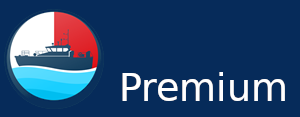Original Text by West P&I Club
The seaport of Nouakchott, Mauritania, is experiencing problems related to wind and swell, risks of grounding due to unreliable berth depths, harbour infrastructure damage claims, an acceptance of the vessel's draught survey figures and shortage claims.
From December through to March (the worst period of February and March), strong currents and swells affect vessels moored to the dry and tanker cargo berths as there is no breakwater protection. These conditions can cause vessels to leave the berth and proceed to anchorage until the weather improves.
Subsequently, the Master must perform a risk assessment and discuss with the Harbour Master whether it is safe for the vessel to enter and stay in the port with the forecasted weather condition during her call. Tugs are compulsory when entering the port, with two 900 hp and one 2026 hp tug available. However, if vessels are required to leave the port due to weather issues or require tug assistance to keep her alongside, reporting suggests that the tug assistance is minimal and will only stand by from a distance.
When alongside, the crew must regularly monitor the vessel's mooring arrangement and tend to the mooring lines as required in keeping with the current and forecasted weather conditions. The Master must perform a risk assessment to determine if additional mooring lines are needed to maintain the vessel safely remain alongside. In deteriorating weather conditions, the accommodation ladder should be closely monitored, with the crew considering raising the accommodation ladder to prevent any potential damage to the ladder and quayside structures.
Risk of grounding
During Inbound/Outbound Transits:
- Request from the local protective agent the latest channel and berth depths and when these were last dredging and de-silting had occurred.
- Obtain the latest information on the navigational situation from local port authorities and local agents before arrival/departure.
- Comply with the maximum permissible sailing draught for the berth of destination/departure.
- Prepare a detailed passage plan for the entire passage in advance and ensure that the bridge team reviews this, and the Master must approve it.
- Additionally, tidal conditions should be reviewed from Admiralty Tide Tables and made part of the vessel's passage plan to determine available Under Keel Clearance (UKC) and currents that may affect the vessel.
- Discuss and agree on the execution of the pilotage with the pilot during the Master/Pilot exchange.
- Keep the speed of the vessel below the maximum permitted. Consider the effect of the vessel's speed on hull squat and the subsequent reduction on the vessel's UKC.
- Check the echo sounder regularly, ensuring that the minimum set depth parameters allow sufficient time to react when the alarm sounds.
- Closely monitor the pilot's instructions, always keeping in mind that the Master is responsible for the vessel's safe navigation, even with a pilot on the bridge. The bridge team should challenge any instructions contrary to the vessel's safety and, if necessary, take immediate action to ensure the vessel's safe passage.
Alongside the berth:
- Acquire the tidal information for the entire duration of the vessel's stay, verify against the Admiralty Tide Tables, and have this information readily available/displayed.
- Confirm on arrival and then routinely assess the berth's water depth and bottom composition using a lead line.
- Monitor the vessel's draught, list and trim at regular intervals, especially during low-water tidal periods.
- Regulate/control the list and trim of the vessel to maintain as close to an even keel profile as possible.
- Check that the loading quantity and cargo distribution arrangements amongst the cargo holds allows full compliance with the maximum sailing draught and UKC requirements.


